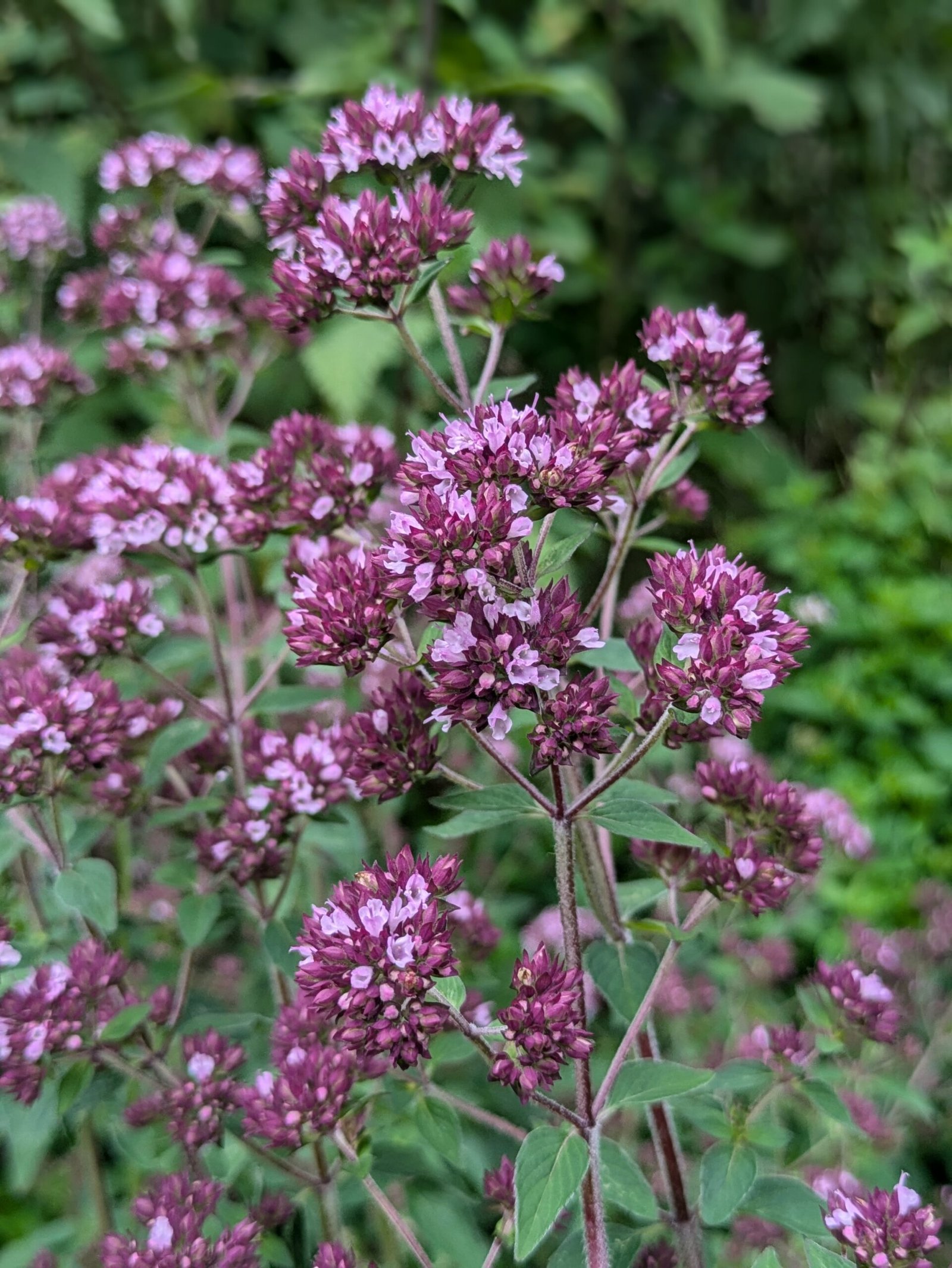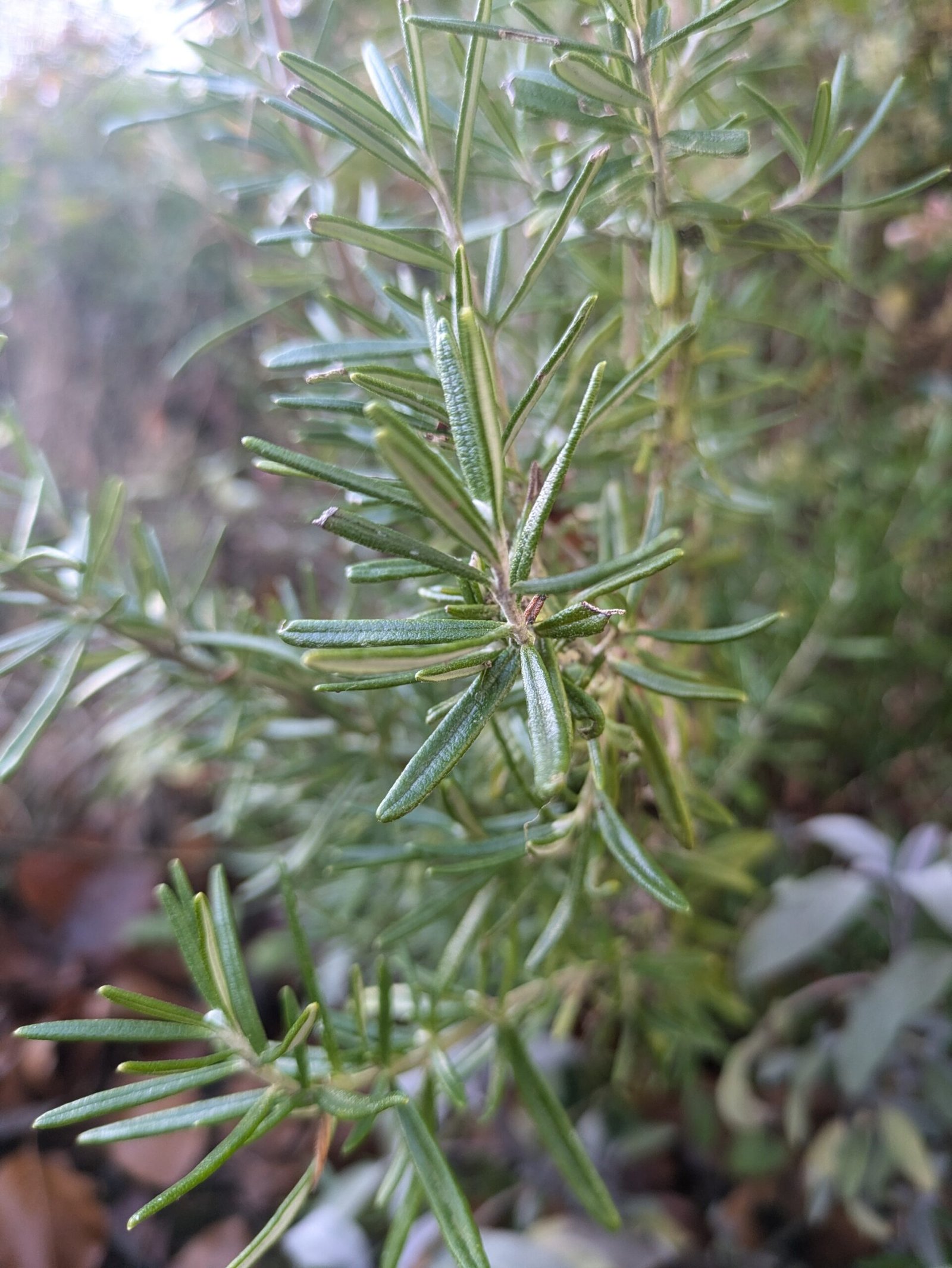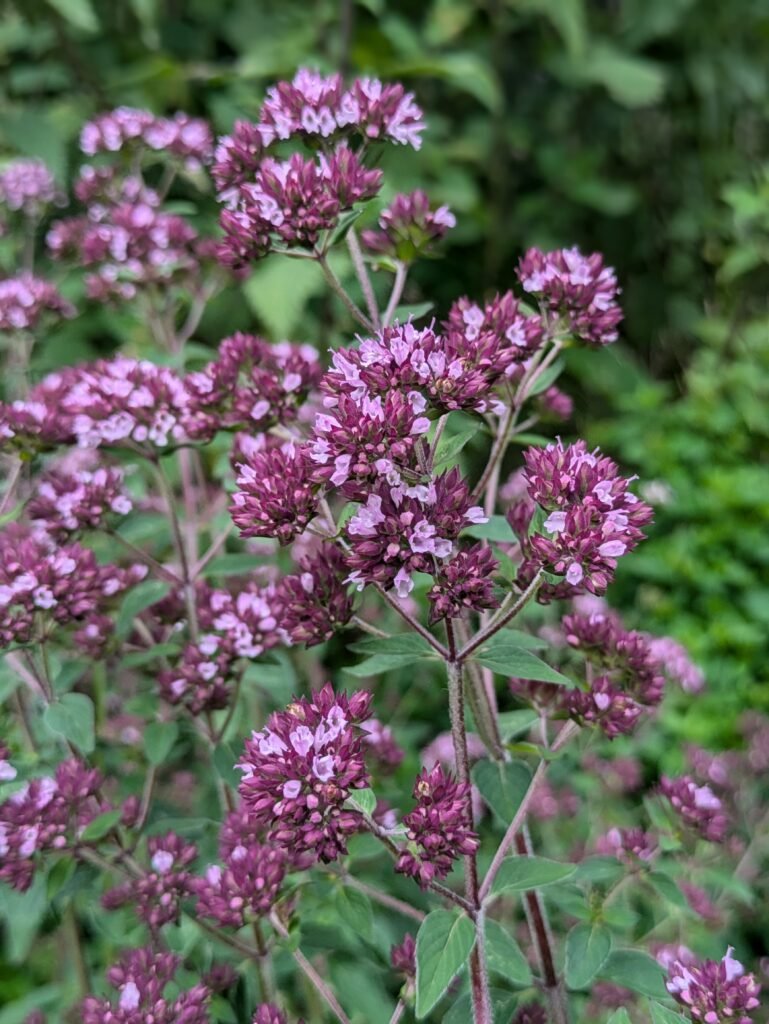Perennial plants are plants that live for more than 2 years. So they will be a permanent or semi-permanent plant in your garden.
Lemon Balm
When to plant
Sow seeds inside or outside from March to May.
Transplant seedlings outside after all danger of frost has passed.
Where to plant
Lemon balm can grow in sun or light shade and doesn’t need to go anywhere specific in a crop rotation plan. It can be quite aggressive and take over in the garden if not controlled, so be careful with it.
Lemon balm can grow alongside most plants, but you’ll probably want to avoid plants that prefer drier conditions than lemon balm, like rosemary or thyme.
Growing
Cutting it back after flowering can encourage leaf growth. Water during dry spells for better results.
Harvesting
Pick fresh leaves as and when you want them. You can also dry the leaves for later use.
Mint
It can be grown from seed, but it isn’t recommended to do this due to its long germination time and low germination rate. It is also easy to grow from root cuttings or by dividing clumps of established plants.
When to plant
Take softwood cuttings from young shoots in spring, and stand them in water until they get roots, then plant them out.
If you are taking root cuttings, then do so in autumn or winter. Dig down a little to expose the roots at the edge of the plant, and cut off long pieces for cuttings. Cut that into pieces 2-3 inches long and plant them just below the surface in compost.
If you are dividing clumps, then do so in autumn. Dig up the mint plant and split the roots however you are able to. Pull them apart if you can, and if you can’t you can use a spade to split the root ball.
Where to plant
It’s a good idea that wherever you choose to grow mint, you contain it in some way. Either plant it in pots or in a contained space in the garden where you can limit its spread, otherwise it may overtake other plants.
Mint can help deter pests for tomatoes, beans, onions, carrots, and brassicas. So they can be planted in any or all sections of your garden with a crop rotation plan. It’s also said to repel slugs.
Growing
Water regularly if grown in pots. If not, water during hot weather, especially if you are picking leaves.
When mint has finished flowering in late summer you can cut the plant down to a few inches off of the ground to encourage leaf production.
Harvesting
You can start harvesting the leaves from late spring (around May) until autumn, before the plant dies back in winter.
Regular picking of leaves can help keep the plants compact, and will encourage leaf growth.
Oregano
When to plant
If you are growing from seed, then sow them inside from February to May, or outside in April or May. Sow them on top of compost and water them, but don’t cover the seeds.
Transplant seedlings outside after all danger of frost has passed.
You can also buy oregano plants or propagate by dividing clumps in spring or autumn, or by taking softwood cuttings in summer.
Where to plant
This plant doesn’t need to go anywhere specific in a crop rotation plan. Try to plant in a sunny spot and give the plant around 12 inches of space as they form a clump.
Oregano can be planted near garlic, squash, brassicas, beans, and tomatoes, meaning they can be grown in any or all plots in your crop rotation plan.
Growing
Water in the first year, but after that, once the plant is established, it won’t need watering unless grown in a pot.
Harvesting
Harvest leaves as required in late spring and throughout summer, even into early autumn. Snip off shoots and strip the leaves from them. Or take individual leaves off of plants.
You can use the leaves fresh, dried, or frozen.

Rosemary
When to plant
You can grow rosemary from bought plants or by taking cuttings from existing plants.
If you are taking a heel cutting, where you take a cutting with some of the stem from the base, then do so in spring.
If you are taking semi-ripe cuttings, then do so in late summer.
Where to plant
Rosemary does not need to go anywhere specific in a crop rotation plan. Space plants 18 inches apart.
Rosemary grows well with sage, thyme, lavender, beans, carrots, and can also be planted with brassicas and tomatoes, although not too close to tomatoes. This covers all 4 plots in the garden, meaning rosemary can be planted in any or all plots in a crop rotation plan.
Avoid growing rosemary with mint, basil, and squashes.
Growing
Rosemary is fairly drought tolerant, and established plants will only need watering after a long spell of hot dry weather. But if you are growing them in a container they will want more regular watering.
If you want to keep rosemary compact and encourage fresh growth each year, trim it back lightly once the flowers have faded. Make sure not to cut into old wood. If left unpruned for a long time it can get leggy, woody and bare.
Harvesting
You can harvest leaves throughout the year, however the soft new growth in summer has the best flavour.
You can use the leaves fresh or dry them.

Sage
When to plant
If you are sowing seeds, then sow them February to May inside, or April to May outside.
If you are growing them from cuttings, take softwood cuttings in early summer.
Plant seedlings outside after all danger of frost has passed.
Where to plant
Sage can deter pests and help brassicas, carrots, tomatoes, and beans. This covers all 4 plots in the garden, so it can be planted in any or all plots in a crop rotation plan. It also grows well with thyme, rosemary, lavender, and lemon balm.
You should avoid growing sage with alliums (the onion family) and cucumbers.
Space plants 1 ft apart.
Growing
Sage plants can get woody and straggly after 4-5 years. Taking regular cuttings to propagate new plants can allow you to prevent this by swapping out plants every few years.
Harvesting
You can pick sage leaves throughout the year, but fresh growth in spring and early summer is said to have the best flavour.
You can use the leaves fresh or you can dry or freeze them for later use.

Thyme
When to plant
If you are sowing seeds inside, then sow them in March or April, or outside between April and September. If you are growing it from seed, you probably won’t be harvesting any thyme in the first year.
If you are growing from cuttings, then take them in late spring or summer.
If you have bought a plant, plant it outside after the last frost.
Where to plant
Space plants 8-12 inches apart. It doesn’t need to go anywhere specific.
Thyme likes dry conditions, so avoid growing alongside plants that don’t like it dry. Including plants like basil, coriander, parsley, and cucumber.
It has similar growing conditions to lavender, sage, rosemary, so grows well with them. They are also a good companion to tomatoes.
Growing
Water in hot spells. Trim it back after flowering if you want to keep the plant compact. It can get woody after a few years, so you can regularly take cuttings to replace the plants every year or two.
Harvesting
Thyme leaves can be harvested throughout the year, but fresh growth in spring and summer is said to have the best flavour.
Snip off young shoots. Regular harvesting helps to keep it compact and bushy, and will encourage new growth.
I am proud to be affiliated with JustSeed, a company that I have bought seeds from for a few years now. I believe in what they are doing over there, and if you are going to buy seeds, garden tools, or seedlings, then please consider checking them out and using my link below to do so. Thank you for supporting me.






Leave a Reply